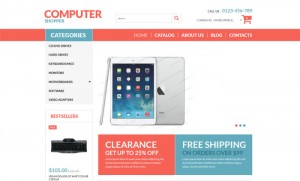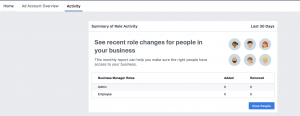
Once upon a time, SEO and PR existed as separate entities.
Today, however, they exist in somewhat of a symbiotic relationship. Essentially, it’s rare that you’ll find one without the other. There is a trend towards SEO agencies hiring PR practitioners and vice versa.
Why has this happened?
If you strip both practices of their titles and deep dive into the skillsets required to be a practitioner in each, you’ll see that there are many similarities. Both PR and SEO practitioners need to be:
- Awesome at creating great content
- Skilled at running outreach
- Brilliant at building relationships.
Furthermore, the development of the digital landscape has meant that PR professionals have needed to change the way they do and measure their efforts.
Rather than measure the success of PR based solely on press coverage or citations, they’ve had to start measuring based on links, which has called for closer alignment with SEO professionals.

We’re now moving towards a time where we’re PR professionals need to think like an SEO, and SEOs need to think like PR professionals.
We’re moving towards a hybrid SEO PR practitioner.
So how can SEO professionals do this? The first thing they can start doing is using the tools PRs use. According to Lexi Mills, who spoke at MozCon 2015 (you can watch her talk and more here), to be successful you must invest time and money in building a great toolbox.
There are a ton of tools available in the PR space. We’ve broken them down into four different categories and have 21 tool suggestions across those categories. Here they are.
Media databases
Media databases are an essential tool in a PRs toolbox, and are used by many PR agencies and in-house departments use to develop comprehensive media lists.
They basically represent a yellow pages for media outlets and contacts. There are many different databases available to PR professionals.

They provide the name, phone number and email addresses of media outlets. Some also provide social media information and a blog search function.
Media databases vary in cost and quality, and you’re unlikely to find one that serves all your needs. Another thing to note that is if you work across regions or continents, it’s unlikely that one database will be effective in all areas.
Some examples of media databases include:
Top tip: While media databases are an important tool, one common mistake is relying solely on a media database to create the list.
Once you develop a base list, manual research and verification is critical to developing good, accurate lists while the database itself should simply be used to help supplement the contact details.

Sourcing services
In the PR world, sourcing services connect journalists with relevant expert sources, and brands with journalists. This enables journalists to write better, more informed stories, and brands to actually tell their stories.
Some examples of sourcing services include:
Top tip: Don’t rely on just one source to connect with journalists and experts.
It’s important to have a vast pool of people to be able to reach out to. Furthermore, different sourcing tools will be more suited to different industries and topics. In essence, as with anything, one size does not fit all.
CRM
Depending on the scale of your PR activities, using a CRM is likely to really make your life easier.
You can keep track of who you’ve had conversations with and organize all your contacts, which is really important to avoid duplicate outreach efforts.
There are some awesome tools for this, and new ones are coming on the market all the time.
Top tip: if you’re part of a team that’s using a CRM for PR (or indeed sales), be sure that everyone is on board with it. This will ensure that the tool works efficiently and effectively.
Email tracking
If you’re not getting results from your PR efforts, your work can become really frustrating.

Using some tracking tools that alert you when an email has been opened can be enough to get you and your team motivated again.
Some great tools in this space are:
Top tip: Being able to see what people open your outreach emails, how often they open them and whether or not they click on them can help you understand how interested people are in what you’re pitching or offering.
It can be really interesting.
Furthermore, if people aren’t opening your email, it may be a sign that you’re reaching out to the wrong people, or you need to think about changing up your subject lines.
Are you an SEO practitioner? Do you use PR practices in your everyday job?
If so, and if you found this post interesting, you’ll love SEO PR expert Lexi Mills’ talk from MozCon 2015. Sign up to get an exclusive opportunity to see this video and more on November 18th in HubSpot’s 24hr video release.
Digital & Social Articles on Business 2 Community(92)









